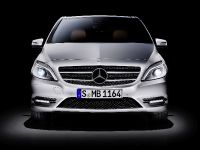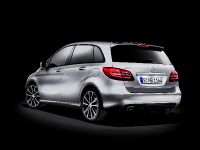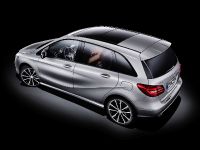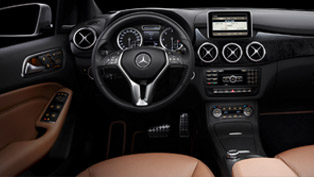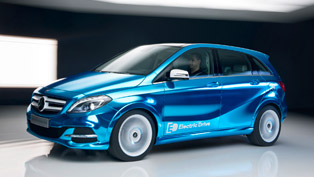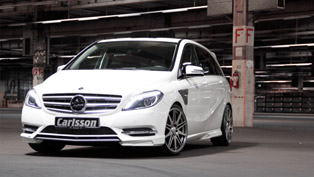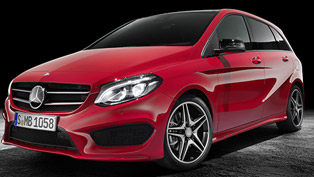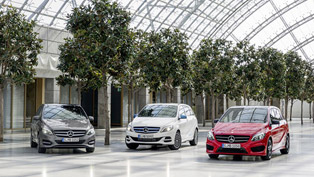2012 Mercedes-Benz B 180 certified with less CO2 emissions
The new Mercedes Benz B 180 has just received the Environmental Certificate, because ir produces 16 percent less CO2 emissions than the prvious one. The high level of environmental compatibility however can be seen even beyond the reductions in fuel consumption. To be more precise Mercedes-Benz analyses the environmental compatibility of its models according to their entire life cycle. This cycle embraces not only the production of the vehicle but also includes their long years of service and eventually adds the recycling at the end of their lives. But this wasn't the only vehicle produced by the luxury brand, which has received the forespoken certificate. Additionally nine other model series were awarded with the Environmental Certificate.
But let us revew the entire life cycle of the Mercedes-Benz B-Class. Starting with the production, through service of over 160,000 kilometres and ending with the recycling – the new model B 180 causes 16 percent less CO2 emissions than its predecessor. The primary energy consumption over the vehicle's entire life cycle is cut by 14 percent, of couse this is in comparison to the precious version of the car. For instance, the fuel consumption of the B 180 BlueEFFICIENCY petrol model with dual clutch transmission ranges from 5.9 to 6.2 l/100 km. To make it clearer the last version of the B 180 had a fuel consumption of 7.3 to 7.5 l/100 km. Therefore this means that there is substantial reduction in fuel consumption of up to 19 percent! These savings are due to an intelligent package of measures, namely - the BlueEFFICIENCY technologies. They include optimisation measures in the area of the powertrain, energy management, aerodynamics, tyres optimised for minimum rolling resistance, weight reduction through lightweight construction and driver information to encourage an energy-saving style of driving.
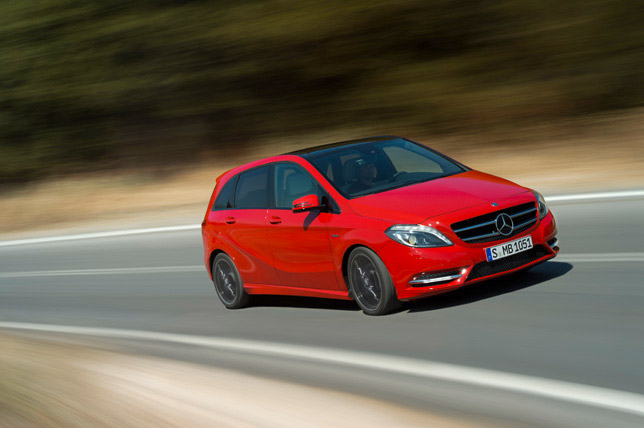
Moreover the new B-Class already meets the recycling rate of 95 percent by weight. To be more precise the B-Class includes 75 components representing a total weight of 39 kilograms which can be produced with the partial use of high-quality recycled plastics, thus resulting in 13 percent increase in the weight of approved recycled components. For example, the typical areas of use are wheel arch linings, cable ducts and underbody panels, which consist for the most part of polypropylene. In addition to that there is also an increased emphasis on closed automobile materials cycles. For instance, a recyclate is used for the front wheel arch linings, which is produced from refabricated vehicle components such as starter battery housings, bumper panels from the Mercedes-Benz Recycling System (MeRSy) and production waste from cockpit units. Furthermore, 21 components in the B-Class weight 20 kilograms. They are produced using natural materials, which marks an increase of 29 percent. And to go further into detaisl these natural materials consist primarily of coconut and wood fibres and honeycomb cardboard in combination with various polymer materials. Next, the modular body-in-white concept is a sign that the B-Class is constructed to accommodate versions with an alternative drive. For example, the appropriate interfaces in the body shell enable the main floor panel to be modified and a step to be produced for the "ENERGY SPACE" on the versions with alternative drive. At last the underfloor compartment covers part of the area under the rear bench seat, thus offering space for alternative energy accumulators.
Source: Mercedes-Benz
